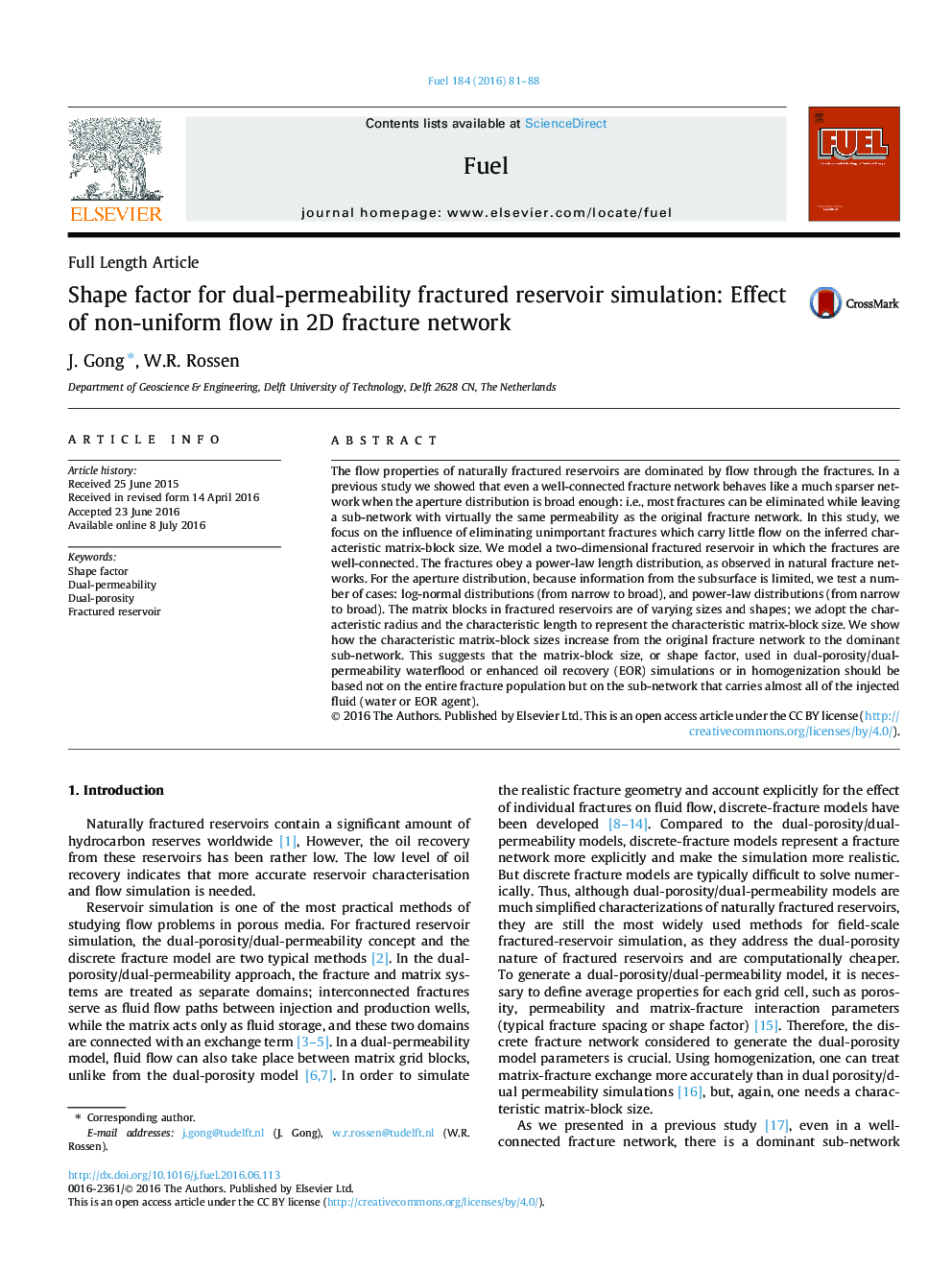| Article ID | Journal | Published Year | Pages | File Type |
|---|---|---|---|---|
| 6632941 | Fuel | 2016 | 8 Pages |
Abstract
The flow properties of naturally fractured reservoirs are dominated by flow through the fractures. In a previous study we showed that even a well-connected fracture network behaves like a much sparser network when the aperture distribution is broad enough: i.e., most fractures can be eliminated while leaving a sub-network with virtually the same permeability as the original fracture network. In this study, we focus on the influence of eliminating unimportant fractures which carry little flow on the inferred characteristic matrix-block size. We model a two-dimensional fractured reservoir in which the fractures are well-connected. The fractures obey a power-law length distribution, as observed in natural fracture networks. For the aperture distribution, because information from the subsurface is limited, we test a number of cases: log-normal distributions (from narrow to broad), and power-law distributions (from narrow to broad). The matrix blocks in fractured reservoirs are of varying sizes and shapes; we adopt the characteristic radius and the characteristic length to represent the characteristic matrix-block size. We show how the characteristic matrix-block sizes increase from the original fracture network to the dominant sub-network. This suggests that the matrix-block size, or shape factor, used in dual-porosity/dual-permeability waterflood or enhanced oil recovery (EOR) simulations or in homogenization should be based not on the entire fracture population but on the sub-network that carries almost all of the injected fluid (water or EOR agent).
Related Topics
Physical Sciences and Engineering
Chemical Engineering
Chemical Engineering (General)
Authors
J. Gong, W.R. Rossen,
